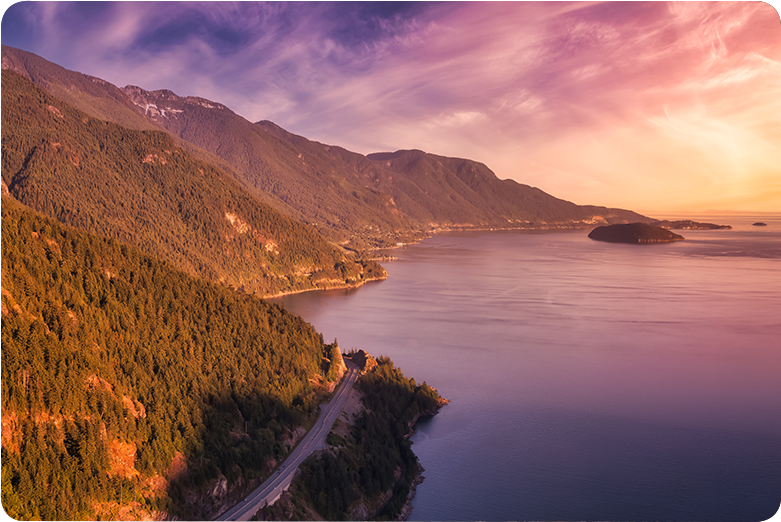The Sea-to-Sky Highway project in British Columbia, Canada was one of the first public-private partnerships to reach financial close within the North American transportation market. The Sea-to-Sky Highway project was needed in order for Vancouver to host the 2010 Winter Olympic Games.
The Sea-to Sky project was designed to improve public transportation between Montreal and the North Shore with the construction of Auto-Route 25; replacing both existing bridge approaches, transition truss span and renovating their existing pontoons of the Hood Canal Bridge; and constructing the new Folsom Dam Bridge to accommodate the 26,000 cars that crossed Folsom Dam every day prior to its closing.
Kiewit was selected as the design-builder on the Sea-to-Sky Highway project for The Province of British Columbia, represented by the Ministry of Transportation and BC Transportation Financing Authority. The design-build team was supported by prime designer Hatch Mott MacDonald and approximately 20 other local sub-design firms.
The project included upgrades to 100 kilometers (62 miles) of the Sea-to-Sky Highway (Highway 99) between Vancouver and Whistler, British Columbia. Work included the construction of 48 new bridges/interchanges; 219 MSE retaining walls; 2.4 million cubic meters of earthwork; and 450,000 metric tons of asphalt paving. The project was managed in four sections, defined by geography, to enhance efficiency and assure construction quality. Crews began construction in August 2005 and completed the project in fall 2009 — in time for Vancouver to host the 2010 Winter Olympics in February.



